
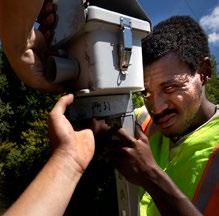




TABLE OF CONTENTS AUTOMATION STAFF News FACULTY News FACULTY HONORS 21 NEW FACULTY STUDENT News 22 STUDENT HONORS 24 STUDENT GROUPS 26 RECENT GRADS ALUMNI News 28 CEEFA PRESIDENT 29 ALUMNI AWARD 30 NEW STAFF 31 STAFF AWARDS 7 20 © 2022 Regents of the University of Michigan JORDAN B. ACKER, Huntington Woods MICHAEL J. BEHM, Grand Blanc MARK J. BERNSTEIN, Ann Arbor PAUL W. BROWN, Ann Arbor SARAH HUBBARD, Okemos DENISE ILITCH, Bingham Farms RON WEISER, Ann Arbor KATHERINE E. WHITE, Ann Arbor SANTA J. ONO (ex officio) THE REGENTS OF THE UNIVERSITY OF MICHIGAN 16
I am excited to share this issue of our department’s annual CEE Review. This is the first edition of the magazine published since I became Interim Chair in late 2021. I want to thank our previous Chair, Jerry Lynch, for his commitment and vision during his four years in this position and his partnership in ensuring a smooth transition moving forward.
This year, we are welcoming five new tenure-track assistant professors between now and Fall 2023: Rachel O’Brien and Joshua Jack joined Alex Szczuka (who has been with our department as a President’s Postdoctoral Fellow) this fall. Atiyya Shaw will be starting in January 2023, and Sabine Loos, who began as a visiting assistant professor this fall, joins us full time on-site in Fall 2023. I invite you to read their profile articles later in this publication, detailing how their specific areas of research fit into our department’s Strategic Directions. CEE’s Strategic Directions are the guiding principles that serve as the pillars of our department and drive our mission of producing “Engineers in Service to Society.” Human Habitat Experience, Shaping Resource Flows, Adaptation, Automation and Smart Infrastructure Finance are our five key Strategic Directions.
For the past few years, we have been highlighting a Strategic Direction in each edition of the CEE Review. Our Fall 2022 CEE Review focuses on Automation. Human-inspired Automation is at the core of much of CEE’s research. This issue features the activities of our transportation group, including CEE Professor Henry Liu’s work at Mcity, where he is the Director.
We also are spotlighting the research that our construction engineering and management team, led by Professors Vineet Kamat, SangHyun Lee and Carol Menassa, is doing to make
We are grateful for your continued generosity and support of our Civil & Environmental Engineering Chair’s Strategic Discretionary Fund. This fund is used in a variety of ways and may provide emergency financial support for students, help pay for building renovations and upgrades, or support the important work of our faculty. Thank you in advance for your consideration.
FROM THE CHAIR
the lives of workers safer, healthier and more productive as they perform their jobs while interacting with automation technology. Another article in this issue highlights the role that the Digital Water Lab, led by Professor Branko Kerkez, is playing in detecting potential drainage issues via sensors, allowing decision-makers and response teams to predict flooding and use Automation to avoid or reduce possible destruction. Additional features explore ways our faculty use Automation to research how vehicles can be made less vulnerable to cyberattacks and how to improve safety in intersections (Associate Professor Neda Masoud) and how Automation can drive innovative ways to finance future infrastructure developments (Professor Peter Adriaens).
We are at a unique place in history as we emerge from the pandemic. Quite frankly, it is unlikely we will completely return to the way we conducted research, taught and studied for classes, or fulfilled our job requirements back in 2019. We are forever altered by the events of the last few years. Although the changes we experienced have often been dramatic, we have an incredible opportunity to blend the best of the past with the lessons we have learned to move forward and approach our tasks and challenges in innovative ways. My personal goal for this department is to continue our momentum and use our Strategic Directions to propel us forward into this uncharted territory, while remaining focused on our mission of educating “Engineers in Service to Society.”
Yafeng Yin, PhD Professor and Interim Department Chair yafeng@umich.edu

To support by check, please use this address: Check payable to: “University of Michigan” Memo line: “Gift to CEE Chair’s Strategic Discretionary Fund” Mail to:
University of Michigan College of Engineering 1221 Beal Avenue Suite G264 Ann Arbor, MI 48109
1
Civil & Environmental Engineering | cee.engin.umich.edu
2021-22 By the Numbers

2 cee.engin.umich.edu | Civil & Environmental Engineering

#3 Civil Engineering Undergraduate Program #4 Environmental Engineering Undergraduate Program Civil Engineering Graduate Program Environmental Engineering Graduate Program National Rankings – U.S. News and World Report #2
DEPARTMENT News #6
Photo by Brenda Ahearn/Michigan Engineering, Communications & Marketing
AUTOMATION
The concept of automation has generated a significant amount of public interest. From thermostats to robotic vacuum cleaners, automation technology is permeating our daily lives.
For civil and environmental engineering, automation encompasses the use of artificial intelligence, data, materials and robotics to revolutionize the methods of design, construction and operation of the built environment and the management of resources. Automation is transforming conventional infrastructure to smart infrastructure, allowing for robust decentralized infrastructure systems. It is reshaping our mobility systems and catalyzing new mobility services and business models. Rapid developments in other engineering fields are opening doors for new levels of automation in civil and environmental engineering.
Automated vehicles’ applications interacting with instrumented highways, adaptive water and energy utilities that respond to changing demands, exoskeleton-empowered skilled workers capable of exceeding human endurance, and automated robots and equipment performing dangerous tasks involved in constructing civil infrastructure are now all within the realm of realization. The automation of payment activities has accelerated in the wake of the pandemic, and promises to revolutionize global banking and financial services. With movement away from traditional fossil fuel energy sources and an increasing focus on electric vehicles and vehicle systems, automation promises to play an increasingly important role in daily life.
The evolving proliferation of automation in civil and environmental engineering promises the emergence of new career opportunities that require a workforce with the skills to confidently apply new technologies across civil and environmental engineering domains.
This requires a broad, multidisciplinary education in civil and environmental engineering that also trains future students in interdisciplinary areas related to computer science, data analytics, operations research, control, economics and business.
Read on to learn how Civil & Environmental Engineering at the University of Michigan is improving automation, and find even more information at www.UMServiceToSociety.org.

 Photo by Marcin Szczepanski/Michigan Engineering, Communications & Marketing
Photo by Marcin Szczepanski/Michigan Engineering, Communications & Marketing


6
Photo by Joseph Xu/Michigan Engineering, Communications & Marketing
RESEARCH News cee.engin.umich.edu | Civil & Environmental Engineering
Mcity is developing digital infrastructure to overlay the physical Mcity Test Facility that will enable remote use of the Mcity track and set it apart as the next-generation AV test facility. Credit: Scott Hyde/Michigan Engineering.
$5M TO ENABLE REMOTE, NEXTGENERATION AUTONOMOUS VEHICLE TESTING AT MCITY
Story by Jim Lynch
Mcity, which operates the world’s first purpose-built test environment for connected and autonomous vehicles (AVs), will invest $5.1 million from the National Science Foundation to supercharge the facility’s evolution into a test track unlike any other.

By enhancing its physical testing environment, adding virtual reality software and generating real-world datasets, Mcity can provide tailor-made simulation scenarios for AV software testing. It’s a new chapter for Mcity, the public-private mobility research partnership led by the University of Michigan, designed to increase access to AV testing resources while accelerating the adoption of new mobility technologies.
Available for public use, Mcity 2.0 will be especially valuable for academic researchers and institutions without their own test facilities and vehicles. U.S.-based researchers can send their algorithms and programs to Mcity, plug them into the facility’s operating system, request specific conditions for testing and participate remotely as those scenarios play out in Mcity’s combined real/virtual setting.
“The new digital infrastructure combining real-world data sets with high-quality simulation capabilities and a physical test track will set Mcity apart from other AV test facilities, and enable remote use,” said Henry Liu, a professor of civil and environmental engineering at U-M and director of both Mcity and the Center for Connected and Automated Transportation, a regional university research center funded by the U.S. Department of Transportation.
“The proliferation of AVs and connected vehicles will create a safer travel environment, and by making this next generation version of Mcity available to a wider range of researchers, we believe we can help accelerate adoption.”
Research efforts in the AV arena can be hindered by a lack of access: access to real-world data, to high-quality simulation environments and to physical testing facilities. By overlaying digital infrastructure on physical infrastructure, Mcity can provide all three.
“Since its launch in 2015, Mcity has solidified the University of Michigan as a global leader in driving the future of mobility,” said Alec D. Gallimore, the Robert J. Vlasic Dean of Engineering. “This investment will increase access to the state-of-the-art test facility, providing more equity to researchers across the country who are on
Real world data sets that support Mcity simulations are collected from select smart intersections in Ann Arbor and Detroit, with more intersections to be equipped. Each intersection is fitted with privacy-preserving sensors to capture the motion of everything from cars to pedestrians, categorizing each road user and identifying its speed and direction. That information can be instantaneously sent to connected vehicles in the vicinity, triggering onboard warnings when cars are in dangerous situations. Mcity partners on these projects.
The University of Michigan Transportation Research Institute (UMTRI), where Liu is also a research professor, has been collecting this kind of data—between vehicles and the surrounding environments—in Ann Arbor for a decade. At its peak, nearly 3,000 vehicles were involved, making it the largest connected vehicle deployment in the world. These projects provided evidence that connected vehicles have the potential to significantly reduce crashes by 80 percent, where driver impairment is not a factor.
Earlier this year, U-M completed a $1.5 million upgrade to a building on the Mcity Test Facility site that will be used to monitor testing. The structure once housed the traffic control center for a test track built by Bendix in 1971 for research on early driverless vehicles.
Mcity’s evolution is the latest addition to U-M’s expanding portfolio of research projects tied to the future of mobility. In July, the State of Michigan approved a budget that included $130 million for a new EV center led by Michigan Engineering. And U-M is already home to the Walter E. Lay Auto Lab and UMTRI, and is a founding partner of the American Center for Mobility in Ypsilanti.
“NSF invests in a broad array of fundamental research and new technologies for smart transportation, ranging from semiconductors and microelectronics to wireless communication, contactless electric vehicle charging, and artificial intelligence,” said Susan Margulies, NSF assistant director for engineering. “Testing these vehicle technologies in real-world scenarios is an essential step for transferring innovations to businesses, communities, and drivers.”
the forefront of this societal shift, navigating the transition to a new world of safer, greener, more equitable, and accessible mobility for all.”
7 RESEARCH News Civil & Environmental Engineering | cee.engin.umich.edu
SMART WATERSHED DEVELOPMENT SEEKS TO ADDRESS FLOODING ISSUES
Story by Michele Santillan
Implementing smart watersheds has the potential to help communities coordinate water management and save billions of dollars in averting flooding, according to CEE Professor Branko Kerkez. Flooding is the leading factor in natural disaster fatalities and property damage in the United States, and often disproportionately affects marginalized and low-income residents due to the historic geographic placement of economically disadvantaged communities.
Kerkez is the lead investigator on a National Science Foundation (NSF)-funded grant that has sought to reduce the barrier to the adoption of technologies to support real-time water system coordination. The project has resulted in open-source sensing technologies that measure and control water systems.
“We are reexamining our role in the community and calling ourselves the ‘Digital Water Lab at the University of Michigan,’” Kerkez said. “Our fundamental research question has been to develop how we operate our systems in real time, especially on the stormwater side.”
Kerkez’s group has deployed sensors covering more than 2,000 square miles throughout the State of Michigan, including the Upper Peninsula. The sensors provide a valuable service because they identify potential flooding issues in real time, acting as eyes when inspectors cannot cover all of the terrain.

The most commonly used type of sensor is ultrasonic, which sends a sound signal to calculate the distance to water, the way a bat would identify its location, Kerkez said. The Digital Water Lab sensors enable researchers and municipalities to process data the minute it arrives, so that it is immediately useful to decisionmakers.
With access to this critical information, municipalities and governing bodies can close or open gates to alleviate potential floods, protecting residents and the ecosystem from stormwater
damage, as well as managing other water-balance factors such as sudden temperature changes that can affect the health of fish.
Coordination among the leaders involved in the system is essential for the automation to work to the benefit of all involved. To achieve this goal, Kerkez’s team has led a collaborative effort with the Huron River Watershed Council, which has promoted the coordinated release of water flows from member municipalities. Kerkez’s initial focus has been the adoption of the sensors on a targeted scale, with the goal of expanding the sensors’ deployment and use as operators see their effectiveness in action.
The Huron River Watershed collaboration began with 10 waterlevel sensors on bridges and culverts, which were funded by an NSF “transition-to-practice” supplement grant. In scaling up, webbased decision-support systems are providing operators with the information to make real-time decisions and coordinate problemsolving responses to assist ecosystems, communities and residents in an area across 800 square miles.
Kerkez noted that building trust and professional relationships are key factors in supporting the growth of automated water systems. Once organizations see the value in the automation and how it enables them to make faster, smarter decisions, they are typically onboard with implementing more advanced computerbased mechanisms.
Evan Pratt, the Water Resources Commissioner for Washtenaw County, deals with infrastructure and water quality issues in his role. He noted that flooding has become more serious in recent years, as rainfalls have become harder, more frequent and more intense in the past 20 years.
“One of the benefits of using Branko’s remote sensing and control systems is that we have data to support our decisions,” Pratt said. Pratt explained the difference between rainwater and sanitary systems, and said that underground sewage systems that carry flow
Mitchell Wojtowicz and Ken Ferrell from the Real-Time Water Systems Lab led by Civil and Environmental Engineering Professor Branko Kerkez install water sensors on streams and rivers in Macomb County, MI. Photos: Marcin Szczepanski/Michigan Engineering
8
RESEARCH News cee.engin.umich.edu | Civil & Environmental Engineering
from subdivisions often have unused capacity at various times during the day. Municipalities and regional water councils can use this available capacity to adjust flows in one section of the system to avert flooding in areas where rainfall is more intense during storms. “Branko’s smart system tries to take advantage of the sanitary sewers’ capacity to stop, send or redirect the releases,” he said.
Pratt also described the logistical advantages of using the smart sensors. “In the past, I used to have to send a couple of employees out to look at a mark on a tree to know if the water was getting too high in a certain area,” he said. “With the sensors, we can look at computers in our offices and know that everything is all right. This also helps us serve our customers better because we can enable them to view the system in real-time and know that they are safe.”
Kerkez’s team is developing algorithms to try to forecast how intensely rain will fall in a particular area in the future. Using data from past storms and extrapolating from that, Kerkez and the groups he works with will use this information to inform future decisions on routing water during significant rainfalls. “The more data we have over the course of years, the better decisions we can make,” Pratt added. “Sensors and remote controls help us to take advantage of the current capacity in the system to make the best decisions for our customers, the taxpayers and residents.”
DIVING DEEPER: JACK SCHMIDT

Jacquelyn “Jack” Schmidt is one of the PhD candidates working with Kerkez’s team to develop algorithms that will automate more processes and make maintenance as simple as possible. Schmidt focuses on identifying barriers to adoption for the sensors and things that get in the way of them functioning successfully. “We are trying to create reliable data to begin with,” Schmidt said. “We know that things are going to happen in the field that interfere with getting quality data, and it’s our job to develop solutions to those issues,” she said.
Scenarios that can cause field-based data disruptions vary from overzealous spiders building webs in the cones of sensor nodes, to branches in rivers that move just enough to obscure the signal the sensor is trying to send. Other times, the strength of cell reception can be an issue, which causes rapid battery depletion as the node strains for a signal to send data.
“We have developed a ‘Swiss cheese’ approach to sensor management to address these issues,” Schmidt said. “ ‘Can we add a SIM card? Can we cache our data differently?’ These are some of the questions we’ve asked ourselves to find ways to improve data quality. We figured out we can save and send data later to avoid data loss, if needed. We’ve added layers of solutions to validate what we are measuring. The collective of all of these levels makes a big impact.”
Schmidt added that the teams have trained and deployed two new field techs, who made a total of 70 trips this past summer of 2022, to provide sensors for water management throughout the State of Michigan. “We provide a very unique level and range of data that doesn’t really exist anywhere else,” Schmidt said. “I think it’s really important that we are able to deliver this service to people throughout the state who depend on us for informed decision-making.”

VIDEO:

RESEARCH News 9
Flooding is the leading cause of property damage and deaths in the U.S. It’s bigger than earthquakes and forest fires put together.
CEE Professor Branko Kerkez and his students at the Digital Water Lab partnered with the researchers at the Center for Social Solutions to measure, better understand and prevent flooding and its aftermath in the most vulnerable communities.
Civil & Environmental Engineering | cee.engin.umich.edu
RESEARCH TEAM RECEIVES GRANT TO STUDY HOW AUTOMATION CAN REDUCE FALLS
Story by Michele Santillan
FALLS ARE LEADING CAUSE OF INJURY
CEE Professor SangHyun Lee and his research team have received a grant from the Liberty Mutual Group to study falls among people, both in the workplace and when performing daily life tasks. The main goal of this study is to develop and validate a technique that reliably monitors not only individual fall risks, but also environmental fall hazards with less invasive wearable monitors that can be integrated easily into daily life.
In the United States, falls represent the top unintentional injury, with more than 8 million emergency department visits reported in 2019. These injuries span all age groups and are estimated to cost more than $150 billion in direct and indirect costs. In addition, many of these injuries occur in commercial spaces, such that falls represent a top-five cause of claims for both general liability and workers compensation insurance. The goal of Professor Lee’s research is to reduce falls and the resulting injuries, along with the medical, social and financial burdens they carry through better, automated detection of fall risk in the built environment.

Recently, wearable motion sensors such as IMU (Inertial Measurement Unit) and insole pressure sensors have received attention as a means of quantitative, continuous and less-invasive fall risk monitoring. Motion sensors are used to measure gait (e.g., gait stride and foot pressure distribution) and detect gait irregularities as the index of fall risk. However, there are several limitations to current wearable-motion-sensor-based fall-risk detection techniques. Current sensors may not be able to differentiate gait irregularities related to fall risks from those related to normal activities. Also, because current techniques require users to wear IMUs on their ankles to measure gait irregularity, they are invasive for application in people’s daily lives. Previous techniques also do not identify environmental fall hazards, which cause a considerable portion of falls. Some examples of these hazards include uneven pavement, poor lighting, clutter and other outside factors that contribute to navigational challenges.
Professor Lee’s study aims to develop less-invasive, more comprehensive fall risk detection using wearable sensors. His proposed technique is designed to account for people’s movement (i.e., gait irregularity) and autonomic arousal responses to fall risks (i.e., acute stress). To perform the research, Professor Lee’s team will apply a wristband-type biosensor together with an IMU to measure physiological stress along with gait. According to Professor Lee, fall risks can be more accurately predicted when high stress is detected together with high gait irregularity because, unlike gait abnormalities related to regular ambulatory activities, reactions to fall risks include an acute stress response. A wearable electrodermal activity (EDA) sensor can be used to monitor stress because sympathetic arousal induced by stress manifests as specific patterns in EDA. Although several biosignals can indicate stressinduced sympathetic arousal, EDA performs better than other biosignals that are measurable by wearable biosensors. Also, to increase the applicability of gait irregularity monitoring, Professor Lee’s team proposes a new engineering feature that allows them to monitor gait patterns from an IMU attached to the waist, not the ankle. In order to locate environmental fall hazards, signals of gait irregularity and stress will be integrated with geolocation, and a statistical hotspot analysis will be applied. Hotspots at which high gait abnormalities and/or high stress readings are concentrated with an abnormally high density will be identified as the location of an environmental fall hazard.
If successful, hazard location information can be useful for maintenance teams of private and public locations to identify and address hazards and increase public safety. The proposed technique can also be used to detect individuals’ fall risks in their daily lives, which enables researchers to conduct individual interventions, such as consultations or physical training sessions for those in the high fall-risk category. Also, individuals who frequently experience hazards can receive information about the location of these risks so that they can adaptively change their walking to reduce their exposure by detouring around hazards and being more cautious while passing through higher-risk areas.
10
JOINTLESS ECC PAVEMENT PLACED AT MCITY WEB EXCLUSIVE: cee.engin.umich.edu | Civil & Environmental Engineering
AUTOMATION SEEKS TO IMPROVE THE WORKPLACE EXPERIENCE
 Story by Michele Santillan
Story by Michele Santillan
One of the goals of automation is to use robotic technology to improve the lives of people. CEE Professor SangHyun Lee and a team of students are working to gain a better understanding of how humans can benefit from interacting with robots, both to improve workplace performance and to make jobs safer.


“We are working with different scenarios in our experiment,” Professor Lee said. “Different people respond in different ways to their interactions with robots. We are looking at ways to adapt automation to see how it positively influences worker responses.”

Professor Lee and his team developed a series of experiments where subjects, including students and workers, interacted with a Kuka robot in the CEE Structures Lab under a variety of conditions. Each subject wore a cloth head covering with sensors embedded in the material, as well as a wristband sensor. These sensors were monitored to measure the brainwaves, electrodermal activity and heart rates to understand physical, cognitive and emotional responses of subjects throughout the process.
In the experiments, each subject took a series of bricks from the robot and placed them as though constructing a building. For example, in some scenarios, the robot moved faster than in other situations. In yet other experiments, the workers more actively approached the robot rather than waiting for the robot to come to them. Professor Lee said that the results show that people are affected by different robot behaviors. However, all their responses are different from each other, i.e., people differently respond to the same robot behavior. This is a very important implication to the adoption of robots in the workplace. For example, the robot should understand its team members’ responses and adjust accordingly to achieve the best human-robot team performance.
Following each series of brick deliveries and placements, the volunteers completed surveys to provide feedback on how they felt during their interactions with the robots.
“We are looking for the optimum way for the robot to behave so that we can provide the most inclusive situation for workers,” said Professor Lee. “If we understand how humans will respond to the robots, we can make the robots understand and adapt to human responses to improve team performance and worker satisfaction.”
11
RESEARCH News Civil & Environmental Engineering | cee.engin.umich.edu
Story by Michele Santillan
‘VISION FOR CONSTRUCTION WORK IN 2035’ SEEKS COLLABORATION
ROBOTS WILL ASSIST THE NEXT-GENERATION OF WORKERS
Human-robot collaboration (HRC) is a way of uniting the abilities of robots with human controllers to perform a variety of tasks. Although the construction industry is moving to adopt this use of robotics, it is important to prioritize the people–the human controllers–in a way that considers the effect of the process on those who will ultimately interact with the machines.
CEE, in collaboration with the A. Alfred Taubman College of Architecture and Urban Planning, recently hosted a workshop that gathered leaders in industry, labor and academia to discuss ways that HRC will influence the profession and to prepare the next generation of construction workers, engineers, and managers for careers of the future.
The charrette-based session, which was funded through a National Science Foundation (NSF) grant, focused on the “Vision for Construction Work in 2035.” Grouping participants into teams, the goal of the day was to bring stakeholders together to identify challenges facing construction and ways to address those challenges that acknowledge the concerns of all parties.
A charrette is defined as an open-ended facilitated discussion in which all stakeholders attempt to map solutions using a collaborative approach, according to Vineet Kamat, the John L. Tishman Family Professor of Construction Management and Sustainability, and Professor of CEE. “We want to look at technology as a way to help reimagine construction as an attractive industry, especially for the next generation of craftworkers,” Kamat said. “It is important to be sure everyone believes their concerns and opinions are heard so we can build trust and consensus.”
Prior to the workshop, participants completed surveys that provided demographic information, gathered initial thoughts on human-robot collaboration in construction, and identified potential benefits and obstacles to using HRC.
More than 96 percent of the survey respondents identified as male, with 50 percent of them between the ages of 46 and 60. More than half of them have worked in the construction industry for 20 to 40 years and cite passion and pride as motivators for their careers.
The five top benefits for using HRC cited in the survey were enhanced productivity, increased efficiency, improved safety, health, and job opportunities. The top five identified obstacles included technology infancy, inaccuracy, safety risks, low technology, and threats to job security.
During the workshop, participants discussed the opportunities and challenges in greater depth. “These sessions highlighted a number of important points,” said CEE’s Carol Menassa, CEE Professor and John L. Tishman Construction Management Faculty Scholar. “People are not afraid of robots as ‘competition’ as long as the robots are designed to be useful in assisting people in doing their jobs,” she said. Professors Kamat and Menassa noted that robots can improve the safety of construction jobs and make the workers’ tasks less physically strenuous, bringing health and safety benefits as well as efficiency benefits to the final work product.
Some initial ways HRC can be integrated into job scenarios include designing workflow processes where people can involve robots in certain specific tasks, finishing drywall construction, working with lasers, and using 3-D glasses for layout. The greater feasibility of using robots in new construction versus working on older structures generally was noted during the discussions.
“Some of the interesting items discussed were the use of robotics to assist with the modular construction industry,” said Craig Triplett, Assistant Director of the Mid-America Carpenters’ Union Carpenter Training Center. Triplett said that one topic discussed was the ability to incorporate robots as assistants to the human body (i.e., exoskeletons). Another discussion point was how to use robots to do layout and to be the labor for humans while workers do installations. Triplett said that the acceptance of robots would likely grow as their use demonstrates continued success.
Triplett noted that the increasing use of robotics will gain greater acceptance as benefits become apparent. “I think the research is invaluable, since we all know that this is the route that will eventually be the norm,” he said. “The more we discuss the ways that we envision robots being used in construction, the better we will be at adopting their place in the industry. At one time, no one wanted to use nail guns, since workers could hand-nail faster. Now, people wouldn’t even think about hand-nailing with a nail gun available.”
“Upskilling” the current workforce is key to integrating robots

12
cee.engin.umich.edu | Civil & Environmental Engineering
into daily use on construction sites. Unions and contractors will play a significant role in assisting their long-time members and employees to become comfortable with the technology through training and incentives to learn new technology.
“The workforce will need to upskill to meet the needs of an integrated robot-assisted future,” said David Kelly, Vice President and General Manager at the Turner Construction Company. “Fortunately, the union and labor representatives present seemed both supportive and genuinely curious about how to bring about change in the industry.”
In addition to assisting the current workforce, HRC has some important potential benefits for future construction workers. “A topic of discussion at the workshop was how the technology may spur a reorganization of the construction value chain, moving away from a traditional model and toward a more vertically integrated arrangement,” Kelly added. “Also, there was a focus on how the technology may be used to attract young people into the industry with the promise of operating cutting-edge robotic technology versus performing strenuous manual labor.”
An eventual goal is to make jobs in the construction industry
more accessible to traditionally underrepresented groups of people, such as women, people of color and those with physical challenges for whom construction work is currently difficult or inaccessible. HRC also is a way to appeal to younger people who are planning their future careers. A long-term goal is to encourage young people to seek training and careers in construction, especially if those entering the workforce can learn how to interact with robots as part of their initial training.
The charrette workshop was an early stage of CEE’s ongoing involvement in this area. “The workshop was part of a planning grant received from the NSF Future of Work at the Human Technology Frontier (NSF FW-HTF) Program,” Professor Menassa said. “A separate research grant received earlier this year from the same program at NSF will support the next steps in the process of how to advance the future of workers in the construction industry. We aim to get feedback from our industry collaborators at all stages of the research to enable improvements for the future of work in the construction industry.”
“All in all, this was very exciting and groundbreaking. U-M is at the cutting edge of this topic,” Kelly of Turner Construction said. One example highlighted in this area of Construction Management is happening in the CEE Structures Lab with the Kuka robot, which is given instructions from a human. Three graduate students–Somin Park, Xi Wang and Hongrui (Hallie) Yu–were investigating human task patterns and studied how people can teach robots to interact successfully. “We have found that people have different preferences in how they interact with robots,” Wang said. “Systems in the future could be designed to be flexible to meet the needs of different people. How can we make the tasks easier and the people more comfortable in working with the robot?”

In some of the collaborative platform test scenarios, robots were given direction from people and became intelligent assistants. The humans were supervisors and were able to change or correct the robot’s execution of the task. The research studies will continue and can be expanded to explore additional facets of human/robot interactions.

RESEARCH News 13 Civil & Environmental Engineering | cee.engin.umich.edu
AUTOMATION IS A FIELD WHERE CUTTING-EDGE RESEARCH IS HAPPENING AT CEE
TRANSPORTATION IS A KEY AREA
FOR AUTOMATION TO THRIVE
“Automated vehicle (AV) technology will transform many aspects of mobility systems,” CEE Interim Chair and Professor Yafeng Yin said. Professor Yin provided an in-depth perspective on Automation, which is one of CEE’s five Strategic Directions. He recently participated in an interview that explored the many technical, philosophical, economic and emotional components that affect Automation, from its implementation to its growth and acceptance.
What role does CEE play in fostering the growth of Automation?
Yin: “I can speak more on driving automation, since this is one of my research areas. CEE faculty also work on other automation applications, such as automating the use of valves and gates to control the retention and flow of water through urban areas to prevent flooding,” he said. “At CEE, we develop enabling technologies for driving automation, e.g., cooperative sensing, path planning algorithms, and the AV safety testing. We also try to understand individual adoption attitudes towards the AV technology, and investigate public policies to guide its development and deployment. For example, we examine safety standards that AVs need to meet before they can be sold to the public, answering questions like ’How safe is safe enough?’ In addition, we spend a lot of time on establishing methodological foundations for planning and operations of mobility systems with mixed autonomy.”
Professor Yin noted that automation is a complex topic that merges technical issues with social science, public policy and a variety of “soft” disciplines.
“For example, how do we ensure environmental justice (EJ) in AV pilot deployments? We have witnessed more and more AV pilot deployments around the nation. Most of them are not deployed in neighborhoods where EJ communities may be concentrated, with less maintained infrastructure and higher levels of pedestrian activity. This is understandable as it is much more challenging for AVs to navigate in those neighborhoods safely. A severe accident may cause a serious setback in the AV deployment and diffusion process. On the other hand, it has been reported that currently AVs struggle to recognize certain road-user groups such as pedestrians of color. The importance of developing unbiased AVs cannot be overstated. The remedy should start with simply increasing the number of images of pedestrians of color in the data sets used to train the systems. This thus has created a difficult dilemma that government agencies would face when planning AV pilot deployments. On one hand, allowing AV pilot tests in EJ communities would generate more knowledge to further improve the AV safety in the long term. On the other hand, in the short term, such tests impose higher risks to EJ communities. Some can even argue that this is against environmental justice, as the risk is disproportionately higher. Therefore, we are developing a quantitative economics model to derive policy insights that would guide governmental agencies to navigate this dilemma by making an explicit tradeoff between short-term risks and long-term gains.”
Can you provide some recent background history on the development of Driving Automation and how it has evolved?

Yin: “More than 30 years ago, the concept was AHS–the Automated Highway System,” Professor Yin said. “That’s more infrastructure-centric. The thought was to put a lot of sensors on the
Story by Michele Santillan
infrastructure, providing support for driving automation. The problem, however, was chicken and egg. In order to justify this infrastructure investment, you have to have vehicles using it. Without automated highways, few would buy those AVs. That’s why it failed. There was no business model for the AHS concept.”
“The current approach for driving automation is vehiclecentric. The idea is to put all the intelligence on the vehicle side, and thus AVs do not have to rely on the changes in infrastructure to navigate a road network. This approach is working better, because carmakers can always make a pitch to certain segments of the population. In other words, there are viable business models.”
“The problem for such a vehicle-centric approach is that even with high-end sensors, individual vehicles will still have a limit in terms of their sensing capabilities. More importantly, from a societal perspective, it may not make economic sense to put all of the sensors on the vehicle side. In addition to vehicle-vehicle cooperation, it may be more cost effective to deploy roadside sensors at strategic locations to enable vehicle-infrastructure cooperation.”
“One of my students, Daniel Vignon, just defended his dissertation on economic analysis of infrastructure-assisted driving automation. His analysis shows that, from a societal perspective, there should be some sensors on the vehicle side and some sensors on the infrastructure side. Every dollar should bring the same bang for the buck–that’s the optimal split. This implies there will be different levels of vehicle automation that customers can purchase. There will also be different levels of infrastructure digitalization. Busy, more dangerous and heavily traveled areas, such as intersections and interstates, will have heavy deployment of sensors.”
“Why is this not happening on a broad scale? There is a lack of funding at state/federal governments who own the infrastructure, and a lack of coordination with carmakers. So we are asking, ‘Can we leverage private/public partnerships to equip our roads?’ CEE faculty Peter Adriaens and I have been working on a research project that aims to identify business opportunities/use cases and develop innovative financing models for scaling infrastructure support for driving automation.”
Both “Autonomy” and “Automation” were used to represent one of CEE’s Strategic Directions. Is there a distinction between the labels?
Yin: “Yes, many people use these two terms interchangeably. However, to me, their implications are different. Automation refers to using machines to replace humans to perform a certain task. Perception, planning, maneuvering–these are different driving tasks. You have different levels of automation, depending on what’s being taken over by the machine. Level 5 is fully automated, where we use machines to completely perform all driving tasks.
“On the other hand, autonomy implies self-governance. The question is–’How do we interpret self-governance in automated mobility systems?’ To me, autonomy is the end game, the ultimate goal of automation. Can we achieve fully autonomous mobility? Look at the concept of human agency regarding their travels. The relationship between vehicles and human agency is complicated.”
Professor Yin traced the social science that is woven into
14
cee.engin.umich.edu | Civil & Environmental Engineering
people’s complex relationships with the automobile. “In the past, we bought a vehicle and got to decide where to go, when to go, which route to take, and we had a sense of control, comfort and freedom. That’s why people purchased a vehicle. It’s not just about driving. It’s a status symbol; it offers a sense of control, comfort, and even shelter. A car comes with a lot of functionality and symbolism. When we own automated vehicles–we give up a certain level of agency–vehicle maneuvers such as car following and lane changes etc., are no longer controlled directly by us. We give these agencies up by our own choice. The question here is will we feel comfortable enough to forgo the agency on the choice of destination, route, or departure and arrival time? In this sense, a vehicle can be fully automated, but not fully autonomous.”
Specifically, how does human agency play a role in automating traffic systems?
Yin: “From a system perspective, we’re going to leverage different levels of agency that people give up to better control our traffic systems. For traffic control, we have been using traffic rules, signs and traffic lights etc. Rules and signs are essentially static controls. For control actuators, we really have traffic lights (and maybe dynamic message signs). We use traffic lights to control arterials and freeways (ramp metering). Traffic systems are not fully controllable, as we don’t have many actuators.
“In the future, as people give up their agency, give up speed choice, and route choice, at that point, AVs can become the actuators. We may only need to control 5 percent of AVs to regulate or smooth a traffic stream. If 20 percent of vehicles are following our routing guidance, we can affect traffic congestion and reduce it. We can leverage the agency of route choice that 20 percent of vehicles give up to better distribute traffic demand spatially.
“Traditional route guidance systems, such as Waze, cannot ensure compliance. If our objective is to control 20 percent of traffic, it’s a hard way to achieve it–We can’t mandate that people
will follow the suggested routes, so it’s not very efficient due to the level of noncompliance. AVs, on the other hand, are controllable, if their owners give up their agency. With an AV, users can specify ‘This AV is my AV.’, and still dictate what the AV does. When users yield control to the system, that’s when they give up more agency. Everyone has a value associated with their agency. The value of agency varies from person to person. A mechanism, auction or negotiation, can be in place to incentivize AV owners to give up their agency. For example, the system identifies the first AV in a queue, and then asks, ‘if I pay you $5, are you willing to allow me to control your speed?’
“If the system controls the first vehicle, it can influence everyone afterward. The second vehicle gets less offered because the system will get less control. The system can estimate the benefit it will receive from controlling an AV to determine the maximum incentive it can offer. However, for some, you don’t even have to offer money to incentivize. They either don’t care about their agency or because they want to do something for the common good. Others may view cars as a source of freedom and are thus less likely to give that up. Age can be one of the affecting factors in the value of agency. So are gender and culture. That’s why the behavior component always complicates automating traffic. Transportation is a perfect area for people-first engineering. We start with people because people want to move from point A to point B. We design a system to satisfy people’s mobility needs. Understanding why people travel and how people travel has been a focus in traditional transportation engineering. An emerging research need is to understand attitudes and preferences of travelers towards various levels of agencies when interacting with AVs.”
To read the full story, please visit our website
STRATEGIC DIRECTIONS: “BUILDING THE FUTURE” WEBINARS
RETURN THIS FALL
Earlier this year, our virtual lecture series, “Building the Future,” highlighted leading experts from industry and academia to discuss each of our five strategic themes and provide new insights. The webinars’ format featured a lead speaker and a panel of experts who addressed the topics through a moderated discussion. Our panelists brought their unique expertise and focal points of study to the table and provided new ways of looking at timely issues.
With this series, we aim to bridge traditional barriers between the lab and the field, and accelerate research into practice. You can find the recordings of these lectures on our YouTube page, as well as in the “Events” section of our strategic directions website www.UMServiceToSociety.org.
Last year’s speakers were:
• Bas Jonkman, Professor of Integral Hydraulic Engineering at TU Delft (Adaptation)
• Elizabeth Fussell, Professor of Population Studies and Environment and Society (Research) at Brown University (Human Habitat Experience)
• Steven Shladover, Research Engineer, at UC Berkeley (Automation)
• Peter Adriaens, Professor of Environmental Engineering, Finance and Entrepreneurship (Smart Infrastructure Finance)
• Amy Childress, Professor of Civil and Environmental Engineering at the University of Southern California (Shaping Resource Flows)
The lecture series resumes this fall and will feature examples of our CEE mission of “Engineers in Service to Society” in action. Thank you to all of our past panelists and sponsors for their support of our webinars. We welcome future sponsors for our sessions. Sponsorship has no financial cost. We ask that organizations agreeing to be sponsors use their communications channels to promote the webinars. Please watch your email for details on how to register to attend our upcoming sessions.
15
Civil & Environmental Engineering | cee.engin.umich.edu
AUTOMATION DRIVES TRANSPORTATION STUDIES TO IMPROVE SAFETY, FUEL EFFICIENCY
Automation has the potential to improve traffic safety and offer other benefits to drivers, pedestrians and society as a whole. The ability of sensor systems aboard automated vehicles (AVs) to collect and provide information that guides decision-making can reduce traffic accidents and optimize traffic flows.
CEE Associate Professor Neda Masoud highlighted a project funded by the National Science Foundation (NSF) that focuses on Cyberphysical Systems.
“The idea is that connected AVs (CAVs) offer a lot of opportunities and anticipated benefits, but for these benefits to be realized, we have to devise systems to leverage these capabilities,” Professor Masoud said, as she explained the concept of platooning. “A vehicle platoon is like a train of vehicles that are moving together with small gaps between them–like when people are tailgating–but in a safe manner because we have the sensor systems and connectivity between vehicles to ensure the smaller gaps do not make this risky. CAVs can move smarter and in a more coordinated fashion, and as a result will offer more energy efficiency, less traffic delay, and several environmental and mobility benefits.”
Another project that Professor Masoud highlighted focuses on cybersecurity of CAVs, and is supported by the Center for Connected and Automated Transportation (CCAT). CCAT is funded by the U.S. Department of Transportation.
“CAVs have more attack surfaces compared with traditional legacy vehicles,” Professor Masoud said. “CAV’s have many sensors that could be hacked. The information that a CAV receives through the communication channel may also be manipulated.” Researchers are investigating ways to identify and detect attacks, as well as exclude and isolate sources of information that are compromised to keep others safe. “We propose new mathematical models that describe the interactions and the exchange of information between vehicles in a platoon,” Professor Masoud said.
“We will need to have redundant information–not just one source of information. For example, I cannot only depend on a sole GPS device, in case it gets compromised. If that happens, and I don’t have other sources to recover the true information, there will be no path forward. We need diversified sources of information so they cannot be compromised in the same way. Then the question
becomes, how do you retrieve the true signal, as different sources (e.g., sensors) may provide slightly different values? The team devises tools to make a system more secure so that one person cannot easily hack an entire system.”
A third project that Professor Masoud highlighted is occurring with support from Denso International America and has a goal of enhancing safety at intersections. This research uses connected vehicle data to devise safety applications at intersections that target vehicles and pedestrians. “As a vehicle approaches an intersection, it sends information to a roadside unit and other vehicles,” Professor Masoud said. The roadside unit collects information from all of the vehicles, which provides a big picture of the intersection. The same big picture can be secured by sensors deployed at the road side, such as cameras. “The road-side unit knows where vehicles are in relation to one another. It can use cameras to identify pedestrians and other objects. With its comprehensive view of the intersection, the unit can utilize our devised models and assign a risk level to different drivers. The intersection unit can then send alerts, warnings or messages to drivers, or even adjust traffic signals,” Professor Masoud said.
This research is mostly based on data-mining methods and utilizes a pipeline of real-time data from intersections. This information then feeds into models, with the outcome being the risk level assigned to different drivers, and consequently the identification of risky scenarios.
The research only measures the trajectory of the vehicle, not information about the driver. “From the observed trajectory, you make a conclusion about what type of driver is behind the wheel without knowing anything about the person,” Professor Masoud said. “Factors examined include speed, acceleration, vehicle jerk, angles, and other trajectory information. All of this is studied with respect to what’s happening in relation to other events and vehicles that are surrounding the vehicle source. If a vehicle is traveling at 40 mph without anything else around, that’s fine. With a person crossing the street in the path of that vehicle, that same speed is not safe anymore.” The roadside unit can detect that, send an alert, and help avoid an accident.

16
RESEARCH News cee.engin.umich.edu | Civil & Environmental Engineering
Story by Michele Santillan

RESEARCH News
Photo by Levi Hutmacher/Michigan Engineering, Communications & Marketing
To read the full story, please visit our website
SMART INFRASTRUCTURE FINANCE ACTIVELY SEEKS INNOVATIVE WAYS OF FUNDING AND FINANCING PROJECTS
Story by Michele Santillan
The Center for Digital Asset Finance (CDAF) at the University of Michigan integrates “digital twins,” or virtual representations of real-world physical smart infrastructure with financial innovations such as fintech, to solve financing problems for critical societal infrastructure services such as energy, water, transportation and housing, along with digital infrastructures such as networks and communications servers. Funded initially by Ripple, a fintech company, the CDAF is maturing and expanding its reach.
CEE Professor Peter Adriaens leads smart infrastructure financing programs and provided an update on some of the latest research the team is using to develop these innovations.

A key underpinning of smart infrastructure finance is the structuring of contractual agreements among parties engaged in physical supply chains and informational data value chains. As Professor Adriaens explains, “infrastructure decisions have become more digital, whether applied to public-private partnerships, project finance structures, or data markets, and define how investment decision-making, payouts and financial risk management are executed.” A great example is the recent $1.1 million Defense Advanced Research Projects Agency (DARPA) award, with CEE Professor Seth Guikema to map, quantify and price economic, political, and environmental risks in major military supply chains. The ultimate goal is to develop software with other partners to create risk management strategies, contractual valuations and agreements between stakeholders.
An environmental application is agriculture. “We recently received a $1.2-million grant with two agencies over three years to fund a project to completely rethink how we finance agriculture in the Great Lakes basin and tie the financing to sustainability objectives,” Professor Adriaens said. “Sustainability-linked financing is a new term in the practice. This project has been the focus of an on-going collaboration among UM, LimnoTech, Croatan Institute, and Blockchain Triangle, one of the partners in the center which has a blockchain-based data platform to link environmental data with financial contracts. Specifically, we are interested in understanding how farm assets should be repriced for contaminant emissions risk using data fusion of land transactions and farm characteristics, as well as hedonic pricing models. Since currently,
farm land value increases with contaminant levels due to cash crop yields, we are structuring new financing models with interest-rate adjusted loan products such as sustainability-linked loans and green farm bonds.”
The goal of sustainability-linked financing is to encourage investors to be environmentally-minded when investing in their projects and to make it fiscally sensible for them to do so. Agriculture in the United States is financed through private loans and the farm credit system. Farm credit is derived by sales of bonds to Wall Street investors, the use of proceeds funds farm credit banks who, in turn, lend to farm credit associations and farmers.
According to Professor Adriaens, the agricultural impact of nutrient runoff and climate change is significant, resulting in a total of nearly 2 billion tons of carbon-equivalent emissions in the Great Lakes region alone. Instead of relying on government subsidies, this project develops asset pricing models to engage the capital markets to drive behavioral change.
Professor Adriaens’ center also is collaborating with the Illinois Institute of Technology and University of Illinois on an NSF Regional Innovation Engine grant focused on ‘Web 3.0’ workforce development and economic transitioning. Given the financial and commodities markets in Chicago, the emphasis of the program is on decentralized finance (DeFi) in Chicago, while Ann Arbor will focus on digital transformation of transportation and water infrastructure. As he said: “DeFi focuses on using smart (automated) contracts on a blockchain, as opposed to centralized finance, which engages banks, brokerages and other entities. Think of using Venmo instead of routing payments through the U-M Credit Union.” Development on Phase 1 of the project is anticipated to start in January 2023 with the initial $1 million, and Phase 2 could potentially see up to $160 million in future funding.
18
To read the full story, please visit our website RESEARCH News cee.engin.umich.edu | Civil & Environmental Engineering
COMMITTEE BRINGS DIVERSITY, EQUITY AND INCLUSION TO ALL ASPECTS OF CEE

CEE’s DEI Committee provides resources and opportunities for knowledge-sharing and growth for faculty, staff and students. Here is a summary of the past year’s activities:

Mentoring - CEE’s graduate peer mentoring pilot program launched in Fall of 2021 with 25 mentees and 14 mentors. It offered in-person and virtual options to students. Throughout the year, the program explored topics such as goal setting, networking, and work/life balance in grad school. The goal of the mentoring program is to provide graduate students with a structured environment where students (1) can benefit from their peers’ experiential knowledge, (2) have the opportunity to connect with their fellow students, and (3) build a scholarly community within the CEE department.
Mental Well-Being Survey - The country saw a rise in mental health needs during the pandemic, and as the CEE community adjusted to the return to campus during a global pandemic, the department wanted to establish a baseline and better understand the mental health needs of students, faculty, postdocs and staff. Survey participants were provided with on-campus and online mental health resources at the end of the survey. The DEI committee received more than 180 responses to the survey. The committee’s next steps will be to continue analyzing data and then share results with the department to help inform future decisionmaking. Based on this work, the CEE DEI Committee’s Mental Health project team was awarded the 2022 Michigan Difference Student Leadership’s Wellness Award.
Rackham Partnership - As the mental health team was creating the survey, CEE was selected for a pilot program through Rackham (the Mental Health and Wellbeing Advocate program) to improve mental health and wellbeing. This is an exciting opportunity for CEE, and the timing will allow for great synergy.
CEE DEI Professional Development Certificate - pilot (~20 beta testers) This pilot, launched in January of 2022, provides a step-by-step process for engaging in DEI skill-building. As individuals in CEE gain proficiency around DEI principles, that education enables the team to build a more inclusive community. Offering a customized DEI Certificate for all roles within CEE enables participants to learn to apply a DEI lens to all interactions. The certificate enhances the study of the intersection of equity and CEE, and demonstrates that CEE is a leader in supporting DEI efforts.
Looking ahead, the CEE DEI committee will begin designing and planning an Early Career Researcher Seminar Series with plans to launch in the next year.
Have a concern? Website - This site launched in Spring 2022 as a way to address students’ requests for more transparency around reporting resources and options. Students also requested a way to provide anonymous feedback about the department, so the DEI committee added an anonymous feedback form.
CEE Shared Experiences - Graduate student listening sessions - Townhall - The DEI Committee partnered with the Graduate Student Advisory Council (GSAC) to provide information relating to department policy on the mentorship of PhD students. The committee has been gathering specific input from graduate students on the type of support they need from their mentors. The committee also seeks to assist graduate students who have struggled with a lack of community because of the pandemic. Some of the topics discussed include recognizing difficulties with stress and isolation and normalizing seeking help. As part of the graduate student listening sessions, the committee identified next steps: discussing action items that were executed in AY2022 to help improve CEE culture and mental health.
Events
• Networking in the Environment (NITE) event collaboration with Minorities in Agriculture, Natural Resources, and Related Sciences (MANRRS) student organization and Climate and Space Sciences and Engineering (CLaSP). A mixer for all community members with the goal to connect minority students with faculty, staff, postdocs and organizations and offices that can benefit their academic careers.
• Transfer student welcome event at the start of each semester
• Resources on How to Navigate and Counter Anti-Asian Racism by Mark Chung Kwan Fan
• Lessons on Mental Health from a Professor with Mental Illness by Associate Professor Ann Jeffers (who leads the Mental Health project team)
19
Civil & Environmental Engineering | cee.engin.umich.edu
FACULTY HONORS
CEE LAUNCHES NEW PODCAST SERIES



Listen to CEE’s Connections & Directions, our new podcast series. Our initial group of podcasts, titled “Pleased to Introduce…” spotlights our five new tenuretrack faculty who are joining CEE in 2022/2023: Joshua Jack, Rachel O’Brien, Atiyya Shaw, Alex Szczuka and Sabine Loos. More faculty, staff and student interviews will be coming soon.


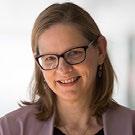

The goals of the podcasts are:

• to introduce our new faculty and reacquaint our returning faculty with our community


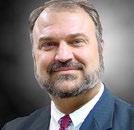


• to demonstrate how our faculty members’ research and teaching supports our CEE Strategic Directions and mission of “Engineers in Service to Society”
• to provide examples of how we’ve incorporated diversity, equity and inclusion in our research, teaching and outreach
We intend to spotlight our wide variety of community members including students, postdocs, student organizations and staff. Look for our podcasts at cee.umich. edu, our YouTube channel, Apple podcasts, Google podcasts and Spotify.

FACULTY News 20
Glen Daigger
2022 Gordon Maskew Fair Award recipient by AAEES
Nancy Love Elizabeth Caroline Crosby Grant 2022 Rackham Distinguished Graduate Mentor Award
Neda Masoud CUTC – Cambridge Systematics New Faculty Award
Evgueni Filipov
CEE Department Award for Excellence 2022 Young Alumni Achievement Award from the University of Illinois Urbana-Champaign
Carol Menassa
ASCE 2022 Walter L. Huber Civil Engineering Research Prize
Photios Ioannou Fellow of the American Society of Civil Engineers (ASCE)
Enrica Bernardini
Jon R. and Beverly S. Holt Award for Excellence in Teaching
Sherif El-Tawil
ASCE’s Structural Engineering Institute’S 2022 Shortridge Hardesty Award
Krista Wigginton CoE Miller Faculty Scholar
Vineet Kamat
Lutgarde Raskin Stephen S. Attwood Award for 2021-2022
2022 Construction Management Award (ASCE) 2022 Rackham Master’s Mentoring Award ASCE Fellow
Endowed Professorship— John L. Tishman Family Professor of Construction Management and Sustainability
Radoslaw L. Michalowski Academy of Engineering in Poland
Ann Jeffers
Honorable Mention for The James T. Neubacher Award in 2021
cee.engin.umich.edu | Civil & Environmental Engineering
NEW FACULTY
To continue our momentum in bringing our Strategic Directions from vision into action, CEE has attracted a diverse group of faculty to support our mission. We are pleased to introduce our new tenure-track faculty members:

JOSHUA JACK
Assistant Professor Joshua Jack comes to us from the Andlinger Center for Energy and Environment and the CEE Department at Princeton University, where he was a postdoctoral research scholar. His current research focuses on energy and resource recovery as part of a sustainable water-energy-climate nexus. Professor Jack holds a PhD in Environmental Engineering from the University of Colorado, Boulder, and earned a BS in CEE from the University of Massachusetts, Amherst. His research focuses on CEE’s Strategic Direction of Shaping Resource Flows and Adaptation.
SABINE LOOS
Assistant Professor Sabine Loos will join us on August 28, 2023. She is an emerging leader of the natural hazards engineering field whose pioneering research surrounds the development of disaster information that centers users and the human experience. She applies geospatial modeling, risk analysis and visualization techniques to develop tools that inform effective and equitable disaster risk reduction and recovery. Her research interests most closely align with CEE’s Strategic Directions of Adaptation and the Human Habitat Experience. Professor Loos completed her PhD in 2021, working with the Stanford Urban Resilience Initiative at Stanford University and the Disaster Analytics for Society Lab at Nanyang Technological University. She received her MS in CEE from Stanford University in 2018 and her BS in Civil Engineering (with the honorific distinction summa cum laude) from Ohio State University in 2016.
RACHEL O’BRIEN

Assistant Professor Rachel O’Brien comes to us from the College of William & Mary, where she was an assistant professor since 2017. Professor O’Brien’s research group focuses on characterizing organic aerosol particles and organic films on indoor surfaces by studying the chemical composition and the products formed during the atmospheric aging process. Professor O’Brien earned her PhD in Chemistry from the University of California,
Berkeley, where she studied oligomeric materials in ambient secondary organic aerosol, and her BA in Chemistry from Grinnell College. Her research ties into the Human Habitat Experience.
ATIYYA SHAW
Assistant Professor Atiyya Shaw will begin at CEE in January 2023 and comes to us from the University of California, Berkeley, where she was a postdoctoral fellow in urban systems. Professor Shaw’s research prioritizes people as the most important element of transportation systems, with her research expertise centering on survey design and analysis, travel behavior modeling, and human factors engineering. Professor Shaw completed her PhD in transportation engineering with a focus on travel behavior at Georgia Tech and holds BSCE and M.Sc degrees in Civil Engineering and Psychology. Her research especially aligns with the Human Habitat Experience and Automation, and how to design human-centered infrastructure.
ALEKSANDRA “ALEX” SZCZUKA
Assistant Professor Alex Szczuka is now a tenure-track faculty member, having served as the Presidential Postdoctoral Fellow in our department. Her research, motivated by broad access to safe and affordable water, uses fundamental chemistry and microbiology to inform treatment of non-traditional water sources to safeguard public health. Professor Szczuka received a BSE degree in Chemical and Biological Engineering from Princeton University and her MS and PhD degrees in CEE from Stanford University. Professor Szczuka’s research aligns with CEE’s Strategic Direction of Shaping Resource Flows.
MICHELLE AMMERMAN
Assistant Research Scientist Michelle Ammerman joined CEE in January 2022 from Kettering University in Flint, Mich., where she had been an Associate Professor in Chemistry and Biochemistry. Ammerman has a PhD in Biochemistry from the University at Buffalo, and a BA in Biology with high honors from the University of Texas at Austin.
21
FACULTY News Civil & Environmental Engineering | cee.engin.umich.edu
STUDENT HONORS
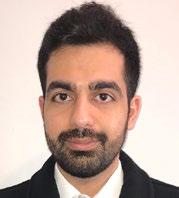
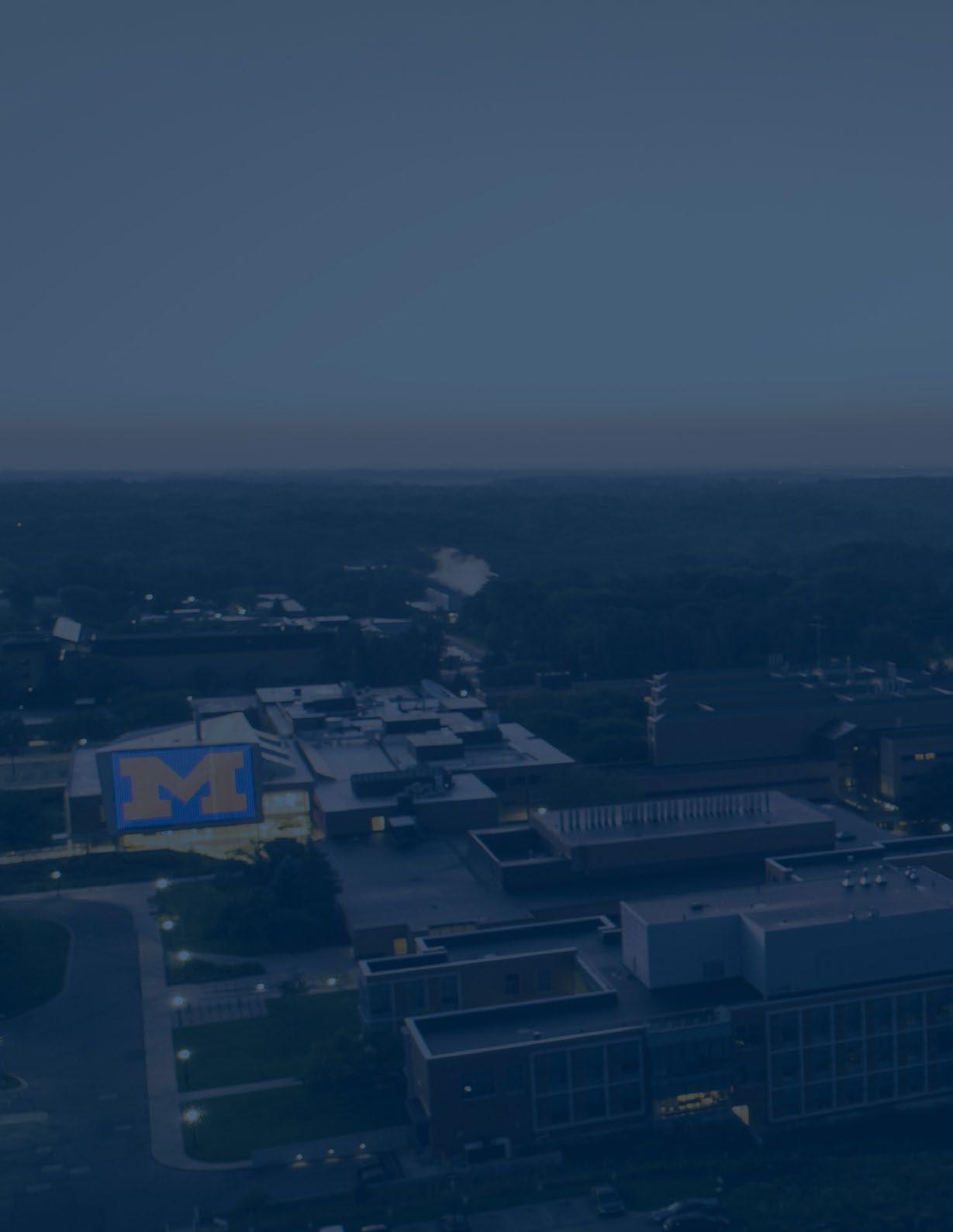







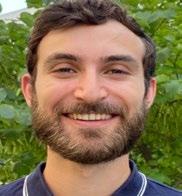






STUDENT News
September 2021 - August 2022
Mojtaba Abdolmaleki Civil Eng. PhD
Rackham Predoctoral Fellowship
Kaley Callaway Civil Eng. PhD
Rackham Merit Fellowship
Eva Albalghiti Environmental Eng. PhD
National Science Foundation Graduate Research Fellowship
Brittany Hicks Environmental Eng. PhD National Science Foundation Graduate Research Fellowship
Huanqi He Environmental Eng. PhD Rackham Predoctoral Fellowship
Zachary Jerome Civil Eng. PhD
National Science Foundation Graduate Research Fellowship
Katherine Harrison Environmental Eng. PhD
National Science Foundation Graduate Research Fellowship
Connor Ligeikis Civil Eng. PhD National Science Foundation Graduate Research Fellowship
Joseph Lybik Environmental Eng. PhD
Gerald & Esther Forrest Graduate Student Fellowship
Gina Kittleson Civil Eng. MSE Rackham Merit Fellowship
Travis Dantzer Civil Eng. PhD
Richard F. and Eleanor A. Towner Prize for Outstanding GSIs
Mira Chaplin Environmental Eng. PhD National Science Foundation Graduate Research Fellowship
Katherine Dowdell Environmental Eng. PhD
Rackham Predoctoral Fellowship
Isabel Pagan-Caballero Environmental Eng. MSE GEM Fellowship
Jacob Harrison Environmental Eng. BSE
22
Distinguished Academic Achievement Award

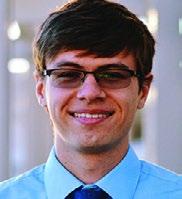



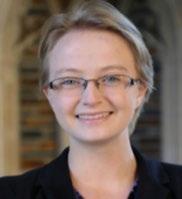
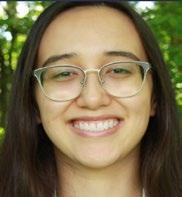
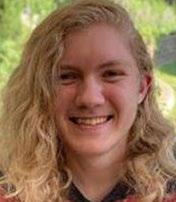


STUDENT News
Alexander Sundt Civil Eng. PhD Student of the Year from the Council of University Transportation Centers
Meagan Tobias Civil Eng. PhD National Science Foundation Graduate Research Fellowship
Matthew Vedrin Environmental Eng. PhD Rackham Predoctoral Fellowship
Yi Zhu Civil Eng. PhD Richard and Eleanor Towner Prize for Outstanding Ph.D. Research
Renata Starostka Environmental Eng. PhD Rollin M. Gerstacker Foundation Fellowship
Justin Avila · Donovan Awrow · Melanie Campozano · Elle Dietz · Isis Hang · Chenwei Huang · Isabel Pagan-Caballero · Arnulfo Pelayo · Sion Pizzi · Tarrik Quneibi · Seth Antonio Sandoval-Skeet · Savannah Wujastyk
CONGRATULATIONS TO OUR PELHAM SCHOLARS
Grace Zalubas Civil Eng. MSE
AISC Scholarship
Ries Plescher Civil & Environmental Eng. BSE Distinguished Leadership Award
Xiao Xiao Wen Civil Eng. BSE
Distinguished Academic Achievement Award
23
Zhengtian Xu Civil Eng. PhD 2021 Transportation Science & Logistics Dissertation Prize 2021 Hong Kong Society for Transportation Studies Outstanding Dissertation Award
STUDENT ORGANIZATIONS
Story by Michael Loveday
American Society of Civil Engineers

We hosted 16 weekly speaker series info sessions, where we invited corporate representatives, professors and graduate students to speak on recruitment, civil engineering skills and research. We also hosted the CEE fall Career Fair in collaboration with MiTSO and the ECRC and held multiple social events for the department, including the Bearclaw coffee truck on North Campus and a study session with food before Fall finals. We also hosted an in-person Chicago trip for the first time in several years, which included taking 50 students to Chicago for the weekend to visit two sites and attended a banquet with alumni. Our goals for this coming school year consist of finding better ways to serve the CEE community, planning to start a build/ service project, restarting some of our old traditions that were abandoned during the pandemic (such as the ASCE banquet), and increasing membership and participation in ASCE.
Chi-Epsilon

Our chapter inducted 17 new members during the 2021-22 academic year. In Fall 2021, our members learned about walkable cities, the work of Herbert D. Vogel and geotechnical engineering. In Winter 2022, our discussion topics included life cycle analysis, effects of stresses on reinforced concrete, the impact of the COVID-19 pandemic on sex trafficking and resilience and equity as they relate to civil engineering. Our goal for the Fall 2022 semester is to increase the involvement of our active members by creating new subcommittees. We aim to improve access to information regarding the requirements for initiation by offering office hours with board members. A long-term focus for the chapter is to document the logistics, schedules and resources for all meetings and events to ensure a smoother transition for newly elected board members.
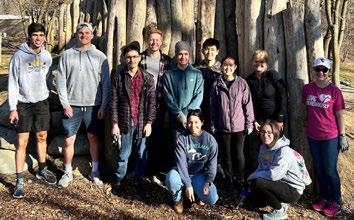
24
STUDENT News cee.engin.umich.edu | Civil & Environmental Engineering
Michigan Concrete Canoe Team

The Concrete Canoe team had our first in-person full year with 70% new members! Our main accomplishment was attending our competition with a physical canoe post-COVID in Athens, Ohio at Ohio University. This was also our first year in a new regional conference -—the Eastern Great Lakes Region— where we were named the 2nd Place Project Proposal, 1st Place Enhanced Focus Area that was on different methods of canoe curing, 2nd Place for Presentation, 2nd Place Final Prototype and 3rd Place in Racing, getting us an 88/100 overall score. This past year was a Western theme and our 2022 canoe was named Stallion. We participated in various outreach opportunities such as going to the American Concrete Institute and CEEFA luncheon, CEE 200, Northfest, Winterfest and SeaPerch. We also addressed our environmental impact and inventory check to help with the efficiency and management of our concrete mix-making. Later on, we visited the Botanical Gardens at the University of Michigan, had many paddling events and BBQs, an Annual Rules Social to learn all the new rules of the competition and annual paper plate social where we awarded each other after a great season!
Graduate Environmental Engineering Network of Professionals, Educators and Students (GrEENPEAS)
We hosted Free Bagel Fridays every month (Fall 2021 and Winter 2022) and coordinated the CEE 5K this past Spring of 2022 at the Nichols Arboretum alongside a potluck organized by GSAC. In summer, GrEENPEAS helped coordinate a happy hour during the IWA AD17 conference in Ann Arbor and we are actively working with GSAC for future CEE events like the kayaking event at Argo Park that took place on June 29, 2022.

Michigan Transportation Student Organization (MiTSO)
Last year, we took two field trips to Mcity and the Southeast Michigan Transportation Operation Center (SEMTOC) in Detroit. The tour to SEMTOC was important because we witnessed the protests on the Ambassador Bridge and observed how traffic management handles disruption to the traffic system. Other events included hosting the CEE Career Fair with the ASCE chapter and a seminar from a local autonomous vehicle company, May Mobility. Four of our members —Zhichen Liu, Lily Craighead, Akshay Jalluri, Ting Fong Chen— represented MiTSO at the ITE Annual Meeting in New Orleans, where our team placed first in the country and won the Gold Award! This year we aim to host more regular in-person events as we try to transition out of the pandemic; this includes seminars from different industry leaders and “lunch and learns” from researchers at the university.
Michigan Steel Bridge Team
Each year our team designs, fabricates and constructs a 1:10 scale bridge according to a set of rules from the American Institute of Steel Construction. We then compete against other universities at a regional competition, and if the team performs well, it will qualify for the national competition. Last year, we competed with our bridge at Ohio University. We were scored on our timed construction run, measurements of weight, deflections, the sway after a load is applied and aesthetics. Some of the activities we par ticipated in last year were team dinners, intramural sports through the university, waffle making and other team-building events.
25
@MConcreteCanoe @umichconcretecanoe
Civil & Environmental Engineering | cee.engin.umich.edu
RECENT GRADS
UNDERGRADUATES
Nathan Amman — Civil Engineering BSE
Emma Anielak — Civil Engineering BSE
Donovan Awrow — Civil Engineering BSE
Emily Bachwich — Civil Engineering BSE
Griffin Barron — Environmental Engineering BSE
James Bass — Civil Engineering BSE
Matthew Benson — Civil Engineering BSE
Joseph Blum — Civil Engineering BSE
Kelsey Boldiszar — Civil Engineering BSE
Avinash Bose — Civil Engineering BSE

Lauren Brennecke — Civil Engineering BSE
Heather Brouwer — Civil Engineering BSE
Lucas Campeau — Civil Engineering BSE
Garrett Cheff — Civil Engineering BSE
Asa De Vries — Civil Engineering BSE
Eric Engel — Environmental Engineering BSE
Sarah Falkowski — Environmental Engineering BSE
Tara Flaherty — Civil Engineering BSE
Madison Foster — Environmental Engineering BSE
Christopher Gatti — Civil Engineering BSE
Allison Grimes — Civil Engineering BSE
Andrew Hager — Civil Engineering BSE
Dylan Haugh-Ewald — Environmental Engineering BSE
Jacob Hill — Civil Engineering BSE
Gabriella Hoeffner — Environmental Engineering BSE
Peter Hoffman — Civil Engineering BSE
Jada Holmstrom — Environmental Engineering BSE
Madeline Horvitz — Environmental Engineering BSE
Josemari Imperial — Environmental Engineering BSE
Trent Juul — Civil Engineering BSE
Jessica Kahn — Civil and Environmental Engineering BSE
Tianna Kilgore — Environmental Engineering BSE
Kathryn Klaschka — Environmental Engineering BSE
Fatmir Kuci — Civil Engineering BSE
William Landowne — Environmental Engineering BSE
Rachel Lebedinsky — Civil Engineering BSE
Thomas Majure — Civil Engineering BSE
Emily Manetz — Environmental Engineering BSE
Christian Marciano — Civil Engineering BSE
Kalina Matossian — Environmental Engineering BSE
Morgan McBain — Civil Engineering BSE
Thomas McKenzie — Civil Engineering BSE
Madeline Mello — Civil Engineering BSE
Derek Miner — Civil Engineering BSE
David Opland — Civil Engineering BSE
Samuel Orta — Environmental Engineering BSE
Sage Paris — Environmental Engineering BSE
Zuly Pasillas-Riquelme — Environmental Engineering BSE
Mario Perez Garcia — Civil Engineering BSE
Leah Pifer — Environmental Engineering BSE
Alexandra Pollack — Civil Engineering BSE
Parker Pomeroy — Civil Engineering BSE
Tarrik Quneibi — Environmental Engineering BSE
Siena Radakovitz — Civil Engineering BSE
Angela Reedy — Environmental Engineering BSE
Elijah Richards — Civil and Environmental Engineering BSE
Erin Schimmel — Environmental Engineering BSE
Anabel Sicko — Environmental Engineering BSE
Janine Sweetman — Environmental Engineering BSE
Gustavo Uscocovich Amador — Civil Engineering BSE
Ana Valles Zubia — Civil Engineering BSE
Jeanna Washington — Civil Engineering BSE
Xiaoxiao Wen — Civil Engineering BSE
Kiersten White — Environmental Engineering BSE
Theodore Wood — Environmental Engineering BSE
Mackenzie Zabel — Civil Engineering BSE
Grace Zalubas — Civil Engineering BSE
Photo: Brenda Ahearn/Michigan Engineering, Communications & Marketing
26
cee.engin.umich.edu | Civil & Environmental Engineering
GRADUATES
Nasri Alghawali — Civil Engineering MSE
Ryan Armbrustmacher — Civil Engineering MSE
Omid Bahrami — Civil Engineering PhD
Hassan Bazzi — Construction Eng & Mgt MEng
Anthony Brehmer — Civil Engineering MSE
Patrick Brucki — Construction Eng & Mgt MEng
Daniel Cachafeiro — Smart Infrastruct Finance MEng
Jinyi Cai — Environmental Engineering MSE
Nicholas Capuzzi — Environmental Engineering MSE
Nicolai Carlson — Civil Engineering MSE
Mira Chaplin — Environmental Engineering MSE
Minghao Chen — Civil Engineering MSE
Kenneth Chung — Environmental Engineering PhD
Tara Flaherty — Civil Engineering MSE
Naoki Fujiwara — Structural Engineering MEng
Ching Fung — Civil Engineering MSE
Cesar Garcia Sr — Construction Eng & Mgt MEng
Mya Gibbs — Structural Engineering MEng
Natalie Guenther — Environmental Engineering MSE
Songjie Jia — Structural Engineering MEng
Rachel Kass — Civil Engineering MSE
Dalton Keys — Civil Engineering MSE
Kathryn Langenfeld — Environmental Engineering PhD
Gaang Lee — Civil Engineering PhD
Hoyoung Lee — Construction Eng & Mgt MSE
Jamie Lee — Construction Eng & Mgt MSE
Bowei Li — Civil Engineering PhD
Lucinda Li — Environmental Engineering MSE
Lorie Lonchamp — Civil Engineering MSE
Nathan Machiorlatti — Construction Eng & Mgt MEng
Rodolfo Martinez Molina — Structural Engineering MEng
Loren Mata — Smart Infrastruct Finance MEng
Michael Mata — Smart Infrastruct Finance MEng
Alexandra Mirro — Smart Infrastruct Finance MEng
Itaru Morimoto — Construction Eng & Mgt MEng
Joseph Murciano — Smart Infrastruct Finance MEng
Thomas Newman — Civil Engineering MSE
Jacob Overberg — Civil Engineering MSE
Dengfeng Qin — Environmental Engineering MSE
Jonathon Riley — Civil Engineering MSE
Enrique Rodriguez — Environmental Engineering PhD
Joe-Jade Rufka — Construction Eng & Mgt MEng
Musawer Saqif — Civil Engineering MSE
Jacquelyn Schmidt — Civil Engineering MSE
Benjamin Sems — Construction Eng & Mgt MEng
Daiki Shoji — Civil Engineering MSE
Austin Smith — Structural Engineering MEng
Seth Stump — Environmental Engineering MSE
Alec Thompson — Civil Engineering MSE
John To — Civil Engineering MSE
Murat Ulasir — Smart Infrastruct Finance MEng
Daniel Vignon — Civil Engineering PhD
Brett Wagner — Environmental Engineering PhD
Xi Wang — Civil Engineering PhD
Yunhao Wang — Civil Engineering MSE
Patrick West — Environmental Engineering MSE
Jamie Wiberg — Construction Eng & Mgt MEng
Awaakeh Wokpeh — Smart Infrastruct Finance MEng
Steven Woodruff — Civil Engineering PhD
Yiming Yan — Civil Engineering MSE
Cheng Yang — Environmental Engineering PhD
Zhen Yang — Civil Engineering PhD

Hui Zhang — Environmental Engineering PhD
Ruixuan Zhang — Civil Engineering MSE
Shurui Zhang — Civil Engineering PhD
Nancy Zhou — Environmental Engineering MSE
Zhenghao Zhou — Environmental Engineering MSE
Siying Zhu — Environmental Engineering MSE
Yi Zhu — Civil Engineering PhD
STUDENT News
Photo: Brenda Ahearn/Michigan Engineering, Communications & Marketing
CEEFA
PRESIDENT’S LETTER
What an amazing time to be a Civil/Environmental Engineer or a student studying Civil/Environmental Engineering! In Michigan and across the country, record investments in infrastructure spell big opportunities for people in our profession. My colleagues and I on the Civil & Environmental Engineering Friends and Alumni (CEEFA) Board are excited to see students return to school for the Fall semester. The opportunities for these scholars are endless.
For instance, the Michigan Department of Transportation (MDOT) is estimated to spend more than $3.5 billion repairing and rebuilding state trunklines in 2022, due to the Rebuilding Michigan program. President Biden’s Infrastructure Investment and Jobs Act (IIJA), signed in 2021, provided an additional $550 billion to be spent on roads and bridges across the country, including highway flood control.
In addition to growing our road and bridge programs, we are celebrating a myriad of accomplishments this year. We successfully completed moving in place the first tied-arch bridge on 2nd Avenue over the I-94 freeway in Detroit. The construction of this 500-million-pound bridge started in 2020 in the parking lot of the Wayne State University campus and was moved in place using a Self-Propelled Modular Transporter and finally set on bearing plates on August 29, 2022.
MDOT also received federal approval to move ahead with conversion of the I-375 freeway in Detroit to an at-grade, urban boulevard. This means acknowledging mistakes of the past, which included building a freeway that destroyed homes and thriving minority neighborhoods, leading to the loss of generational wealth for thousands. While we cannot undo the actions taken in the past, the new corridor will offer options to multi-modal users, reconnect neighborhoods and include tributes to the history and culture lost in the name of urban renewal.
Finally, MDOT submitted our National Electric Vehicle Infrastructure (NEVI) plan to the federal government on July 29, 2022. This plan is required by all states to be able to access the electric vehicle funding available to each state. The Michigan NEVI plan is focused on a safe, equitable, reliable, convenient, and interconnected transportation electrification network system. This plan also includes a strategy to achieve carbon neutrality by 2050.
All of these investments represent my belief in MDOT’s role and responsibility to provide mobility options for all residents. These goals are only attainable because of the commitment from our partners, none more important than U-M CEE. The students
of today will be the leaders of tomorrow, bringing programs such as these from plans to reality. Here’s how CEEFA is supporting these efforts.
One of the improvements proposed at our last board meeting was to create an inclusive process for our board meetings and allow greater alumni participation in CEEFA events and activities. By making a meeting link available to all alumni and allotting time for comments through the addition of a standing agenda item, we will provide an opportunity for participants to share their thoughts or provide comments for ideas regarding the direction of the department.
We also reaffirmed our support for the CEE Pelham Scholars Program, which was developed to join with students who share our commitment to diversity. By providing one-on-one mentorship with industry professionals and an education, we are preparing students for successful and rewarding careers. In 2021-2022, Pelham scholarships were awarded to 11 Master’s degree students, and 6 undergraduate students received mentorship. For this beneficial program to continue to achieve success, we must all encourage participation from our industry partners.
Another program bringing talent to Michigan is the Dual Degree in Engineering partnership among the University of Michigan and the colleges of the Atlanta University Center Consortium (Clark Atlanta University, Morehouse College and Spelman College). This unique program provides a successful pathway for students to complement a liberal arts degree with an engineering degree from one of the world’s top universities. It is the best of both worlds--rich in learning experiences and opportunities, as well as a phenomenal launchpad for success.
It was great seeing my fellow board members, alumni, and students at the annual football tailgate on Saturday, September 17, 2022. This is always an exciting event that provides an opportunity for networking and connecting with old friends.
I want to thank each of you for your support, your commitment to our shared goals and your friendship.
Paul C. Ajegba, P.E. -Director, Michigan Department of Transportation -CEEFA Board President

ALUMNI News 28
Dear CEE Alumni, Students and Friends,
cee.engin.umich.edu | Civil & Environmental Engineering
CEE Alumni of the Year: Larry Brinker, Jr.
Larry Brinker, Jr., the Chief Executive Officer of Brinker Group, was awarded the CEE Alumni Merit Award of 2022.
The Alumni Merit Award recognizes those who graduated from the University of Michigan and truly embody the phrase “leaders and best.” Recipients of the award are dedicated to helping their communities and improving the lives of others. With this honor, the winners are celebrated for their hard work and the projects that they have contributed to post-graduation.
Brinker, Jr. is hands-on when it comes to giving back to those who need encouragement most. A progressive leader and catalyst for growth, he has been involved in more than $4 billion dollars of construction projects, primarily in the transformation of Detroit and is furthering his impact through investments beyond the construction industry that are making a difference on a global scale. Whether it’s in his role as part owner, CEO and successor to his father of Brinker—a family of five commercial construction companies—or through thoughtfully targeted investments with Iroquois Equities, his life’s work is driven by one mission: “Impact the community where passion and purchase intersect by providing scholarship, mentorship and opportunity.”
He serves on several boards and is an active member of industry associations, focusing on his charitable commitments, spending quality time mentoring and providing opportunities for young people in our community. Some highlights of his focus on community building include these initiatives he established:
• Larry Brinker, Jr. Impact Scholarship – Founder of this University of Michigan scholarship fund which will be awarded to four students annually.
• COVID-19 Legacy Survivor Scholarship – Knowing firsthand the devastation and loss that hit our community, Brinker, Jr. created a national scholarship fund with a mission to provide financial support to students who may be struggling with college tuition after losing a parent to COVID-19.
• Minority Business Mentor/Protégé Program - Over-and-
Chief Executive Officer, Bricker Group
above his company’s service as the construction manager for the Detroit Pistons Performance Center, Brinker, Jr. first launched this program designed to mentor smaller, Detroit-based, subcontractors on tackling larger projects often awarded to larger companies. The long-term goal is to provide the opportunity and in-the-trenches experience that would ultimately strengthen these firms’ portfolio and ability to compete for business. This program lives on through its placement on other Brinker construction projects.
A graduate of the University of Michigan, Brinker, Jr. has been widely recognized as an Entrepreneur of The Year® 2018 Michigan, and Northwest Ohio Region Awardee and National Finalist, as well as a 2015 recipient of Crain’s Detroit Business 40 Under 40 and Detroit Business Magazine 30 In Their 30’s awards. As the CEO of Brinker, Brinker, Jr. leads the executive team driving the future growth of all five companies in the Brinker Group through strategic planning and collaboration.
He serves as a director on the Civil & Environmental Engineering Friends and Alumni (CEEFA) Board. CEE is proud to recognize Larry Brinker, Jr. as the recipient of the Alumni Merit Award for 2022.

29
Story by Michele Santillan
ALUMNI News Civil & Environmental Engineering | cee.engin.umich.edu
Larry Brinker, Jr
NEW STAFF
Heather Bigelow
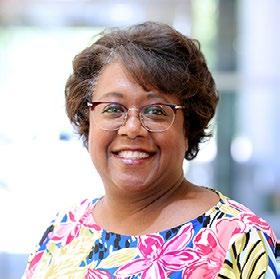





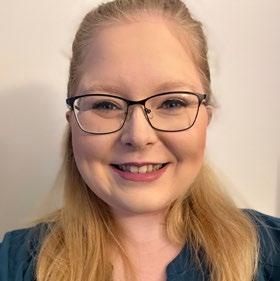
Student Services Assistant



Janelle Cramer
Mark Kleersnyder
Desktop
Mark
Rachel Learman
Research Lab Specialist
STAFF News
Heather joins the Student Services Team, where she assists in event planning, room scheduling, recruiting, admissions and helping current and prospective students. She comes to CEE from the Ross School of Business.
30
is our new IT lead. He comes to us from the Ross School of Business, where he worked since 2016. He has been praised for his customer service expertise and ability to troubleshoot a wide variety of technical issues. Mark and his wife have two young daughters, and they enjoy being out in nature: camping, biking, kayaking, and going for walks with their pet pug.
Specialist Senior
Michele creates printed and digital pieces promoting the work of the entire CEE community. She maintains the CEE website, manages social media accounts, coordinates media coverage, takes photographs and writes news stories highlighting research and events in the department. Michele is married and has one daughter, who is a freshman at U-M. In addition to spending time with her family, Michele enjoys reading about current events and watching historical documentaries on television.
Michele Santillan
Marketing Communications Specialist
Janelle is a member of the Financial Team and works with grants and proposals. She assists with the financial management of these research and departmental accounts, including reconciliation and the purchase of major equipment. Janelle has three adult children - two girls and one boy. She loves cooking and baking.
Senior Research Administrator
Rachel is a full-time research technician who supports different aspects of work in the Wigginton and Eisenberg Labs to quantify SARS-CoV-2 in wastewater. Her primary role is lab-based and focused on extracting and concentrating field-collected samples and then testing those samples. Rachel loves hiking and spending time outdoors.
cee.engin.umich.edu | Civil & Environmental Engineering
STAFF AWARDS
Steve Donajkowski Receives CoE Staff Excellence Award

Senior Mechanical Technician Steve Donajkowski received the College of Engineering Staff Excellence Award. To be considered for this honor, a staff member must be nominated and receive six letters in support of the nomination from other department members.
CEE Unit Administrator Patricia Brainard nominated Donajkowski and cited his commitment to a diverse, equitable and inclusive environment as one of the many reasons for his selection. When a CEE quadriplegic student was involved in a tip-over mishap in another part of the building, Donajkowski communicated the issue to management and worked to address the trip hazard immediately, going above and beyond his expected role.
Donajkowski’s nomination form and supporting letters cited his dedication to dependability, patience and a strong work ethic; his commitment to facilitating the success of others; and his willingness to improve the larger community. He joined the CEE staff in March 2017 and has developed strong working relationships with faculty and students. Congratulations again to Steve on receiving this honor!

Technicians Receive CoE Staff Incentive Program Award Honors
CEE Electronics Technician Ethan Kennedy and Engineering Technician Justin Roelofs received the 2021 Staff Incentive Awards. The Staff Incentive Program recognizes staff who live the College’s core values of leadership and excellence; creativity, innovation and daring; diversity, equity and social impact; collegiality and collaboration; and transparency and trustworthiness.

Congratulations to CEE Staff Excellence Award Recipient Sherry Brueger
CEE honored Sherry Brueger, Senior Administrative Assistant and Human Resources Coordinator, with the 2022 CEE Staff Excellence Award. Sherry’s nomination form noted that she “exemplified the values of CEE, as well as the performance expectations set by the college.” Sherry “excels at professionalism, collaboration, being organized, and the quality of work produced, and is trustworthy, collegial, creative and leads by example.” Her knowledge was particularly beneficial this past year, as CEE brought on 12 new lecturers and five incoming faculty.
STAFF News
31
Stories by Michele Santillan
Senior Mechanical Technician Steve Donajkowski
Senior Administrative Assistant and Human Resources Coordinator Sherry Brueger
Engineering Technician
Civil & Environmental Engineering | cee.engin.umich.edu
Justin Roelofs & Electronics Technician Ethan Kennedy
Congratulations to Our Newly Retired CEE Faculty
CEE extends the department’s deep gratitude and appreciation for the contributions of two of our faculty members who retired at the end of May: CEE Professors Kim Hayes and Terri Olson.
We want to thank Professor Hayes for his years of dedication to CEE. Among his many roles, Hayes served as the CEE interim chair in 2011-2012, and later the chair of our department from January 2013 through June 2017.
During his long career, he also was the Program Director for Environmental and Water Resources Engineering and first came to CEE more than 30 years ago. Professor Hayes’ expertise spanned the fields of surface and interfacial chemistry, environmental chemistry and engineering, and nanotechnology for the improvement of water quality. His work included molecular-scale characterization of metal ion sorption at mineral-water interfaces, surfactant-based groundwater remediation strategies, biogeochemical transformation of inorganic and organic contaminants, development of metal working fluid systems for machining operations to reduce health risks and environmental impacts associated with their use and disposal, the advanced oxidation processes of pharmaceutical compounds in water using Fenton-based iron/sulfide catalysts, and sustainability of water quality monitoring and arsenic/microbial removing filtration systems in rural communities in Bangladesh.
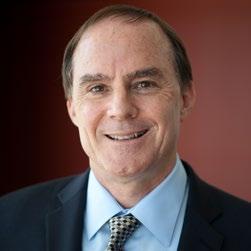
Professor Hayes’ honors include a NSF Presidential Young Investigator Award, a UM Distinguished Faculty Achievement Award, a CH2MHill Distinguished Lectureship, an Outstanding Publication Award from the Association of Environmental Engineering and Science Professors (AEESP) for a “Landmark paper” that significantly influenced the practice of environmental engineering, and a Distinguished Service Award from AEESP as board member and secretary. He published 110 journal articles, 11 book chapters, and more than 200 refereed conference proceedings, summaries, and abstracts. He graduated 21 PhD students and 33 MSE research students during his career.
We want to thank Professor Olson for her pioneering research and commitment to our profession. She has served as the Undergraduate Committee Chair for years and as the Associate Department Chair of Undergraduate Programs. We will certainly miss her dedication to her teaching, her students, the department, and academia.

Professor Olson has left an indelible mark on the department having led the creation of our ABET-accredited BS degree program
in environmental engineering. In addition to architecting one of the earliest environmental engineering programs in the nation, Professor Olson also introduced new courses to the program, including CEE460 Design of Environmental Engineering Systems and CEE366 Environmental Engineering Laboratory. In 2013, she was elected by students in the department ASCE chapter as the best teacher of the year through the ASCE Faculty Award. Professor Olson has also had impact on student development having advised four PhD students (one being co-advisor), 21 Masters’ students and 7 undergraduate students.
Professor Olson established an extremely high-impact research program centered on the physical and chemical processes associated with drinking water infrastructure. Her research specifically contributed fundamental insight and models on the fate of contaminants that pose public health risks in drinking water systems. In this arena, Professor Olson tackled some of the most complex and challenging research questions leading to novel contributions to the body of knowledge that lead to dramatic change in how water utilities process drinking water. Evidence of her widely recognized thought leadership is her selection by the Michigan American Water Works Association (AWWA) for the Jack A. Borchardt Award for Advancements in Water and Wastewater. Furthermore, her selection to serve on two State of Michigan advisory boards focused on advising the state on addressing drinking water contaminants, including the issue of lead in Benton Harbor’s distribution system and the second on the implementation of the Lead and Copper Rule, is further evidence of her visible national leadership. During Professor Olson’s time at the University of Michigan, Professor Olson has published 15 journal papers, with 11 of them authored by her PhD students. She has also authored an additional 46 non-refereed conference papers. While at the University of Michigan, Professor Olson has been a PI and Co-PI on over $3.5 million of funding, with $1.18 million allocated to her group used to fund MS and PhD students.
CEE expresses our deepest gratitude to Professors Hayes and Olson for their dedication to our profession, our students and our department. We are a better unit because of their contributions to CEE, and we will remember the positive impacts their programs and research will continue to have in the years to come. Please join us in wishing them all the best in their respective endeavors. Both were honored with emeritus titles upon their respective retirements.
32
Story by Michele Santillan
Terri Olson
RETIREMENT News cee.engin.umich.edu | Civil & Environmental Engineering
KIM HAYES
IN MEMORIAM
In order by year of graduation
Henry Sterngold
BSECE ‘43 06/09/2022
David W. Duttweiler BSECE ‘48 10/11/2021
E. Gordon Gravelyn BSECE ‘48 MSE ‘57 05/08/2022
Wadi S. Rumman
BSECE ‘49 MSE ‘53, PhD ‘59 01/17/2022
Carl E. Guse BSECE ‘51 10/02/2021
George M. Levin BSECE ‘51 05/21/2022

George J. Fletcher BSECE ‘53 07/23/2017
Edward J. Furdak BSECE ‘55 01/06/2022
Milton D. Redick BSECE ‘55, MBA ‘63 01/14/2022
Bruce Douglas BSECE ’55 01/13/2021
Donald G. Eagling MSE ‘55 10/26/2020
David R. Horsefield
MSE ‘56 07/13/2019
Eugene D. Miller BSECE ‘56 05/24/2021
Santokh S. Saghera BSECE ‘57, MSE ‘59 09/24/2018
Craig A. Ballinger BSECE ‘57 09/26/2016
Frederick J. Sage BSECE ‘58 01/12/2022
Donald J. Treder BSECE ‘58 10/14/2020
John Rose BSECE ‘58 07/11/2022
Jayesh D. Kapadia MSE ‘59 04/01/2022
Paul J. Gogulski BSECE ‘60 12/17/2021
George M. Kaliman BSECE ‘60 11/11/2021
Altan Y. Hansen MSE ’61 01/07/2022
Anthony B. Muiderman
BSECE ‘62 01/13/2022
Michael C. Notars BSECE ‘62 03/11/2020
Arthur J. Oliver BSECE ‘63, MSE ‘68 01/06/2022
Donald J. Schulz BSECE ‘65 01/17/2022
David M. Swinehart BSECE ‘66 12/01/2020
Michael E. Jensen MSE ‘66 MPH ‘66 03/25/2021
Joel L. Caves MSE ‘67 05/11/2022
Suresh K. Sangal MSE ‘68, PhD ‘70 10/02/2022
Alan J. Potok BSECE ‘70, MSE ‘78 01/13/2022
John G. Palmer BSECE ‘70 10/18/2021
Thomas M. Boothe BSECE ‘71 10/30/2020
James A. Cook
BSECE ‘71
07/03/2022
Kenneth W. Arnold BSECE ‘74 06/19/2022
Jack E. Durbin
BSECE ‘75, MSE ‘80 01/14/2022
Gregory E. Towne BSECE ’75 01/21/2022
Brien K. Wassman BSECE ‘76 11/30/2021
Charles S. Elder BSECE ‘80, MBA ‘82 04/03/2022
Robert Larsen BSECE ‘80 07/30/2022
Peter B. Root MSE ‘81 06/23/2022
Andrew G. Hay BSECE ‘05 08/08/2021
Manu Akula MSE ‘10, PhD ‘13 02/18/2022
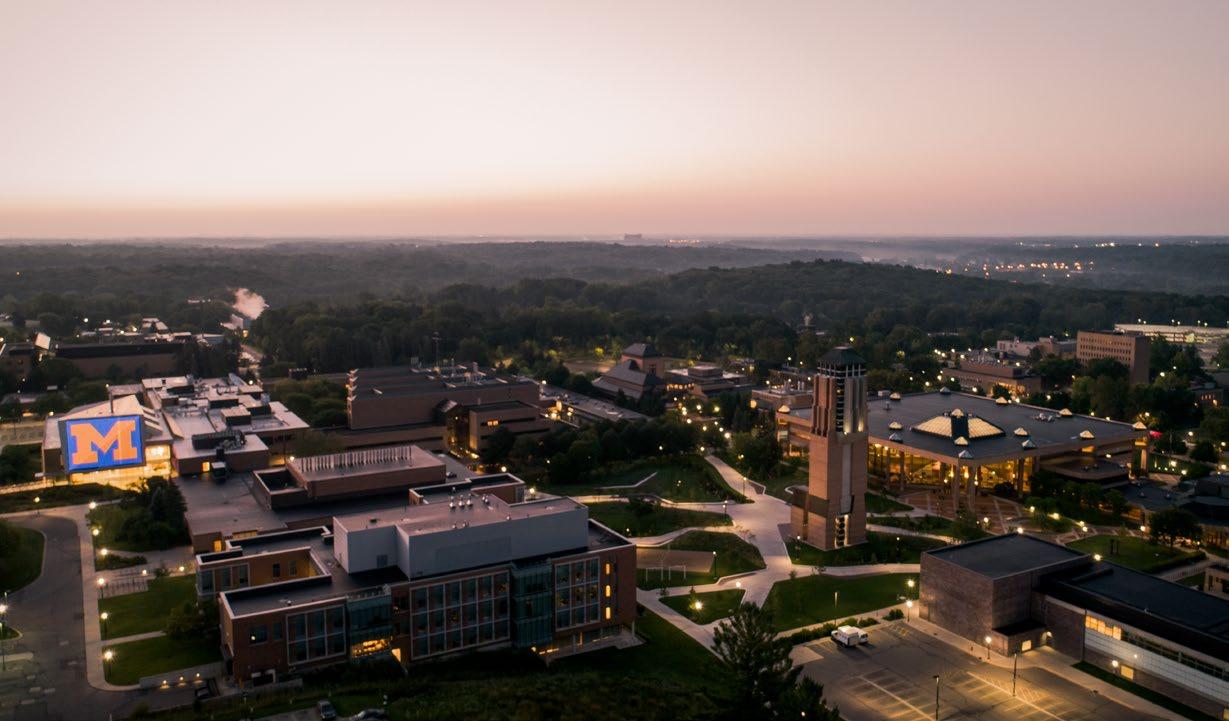




NONPROFIT ORGANIZATION U.S. POSTAGE PAID ANN ARBOR, MI PERMIT NO. 144
Stay connected. @UMCEEFA @UM_CEE @UM_CEE
2350 Hayward Street 2105 GG Brown Building Ann Arbor, MI 48109-2125
Front and Back Cover Photos: Levi Hutmacher/Michigan Engineering, Communications & Marketing Magazine Design: Mason Hinawi/ U-M CEE, Communications & Marketing
U-M CEE











 Photo by Marcin Szczepanski/Michigan Engineering, Communications & Marketing
Photo by Marcin Szczepanski/Michigan Engineering, Communications & Marketing








 Story by Michele Santillan
Story by Michele Santillan
















































































